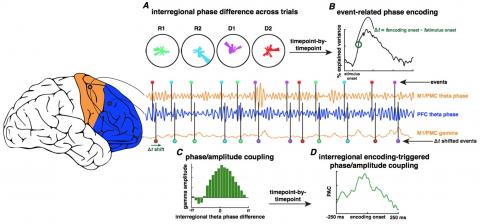
Oscillatory dynamics coordinating human frontal networks in support of goal maintenance
Bradley Voytek, Andrew S. Kayser, David Badre, David Fegen, Edward F. Chang, Nathan E. Crone, Josef Parvizi, Robert T. Knight, Mark D’Esposito
Abstract: Humans have a capacity for hierarchical cognitive control: the ability to simultaneously control immediate actions while holding more abstract goals in mind. Neuropsychological and neuroimaging evidence suggests that hierarchical cognitive control emerges from a frontal architecture whereby prefrontal cortex coordinates neural activity in the motor cortices when abstract rules are needed to govern motor outcomes. Here we utilize the improved temporal resolution of human intracranial electrocorticography to investigate the mechanisms by which frontal cortical oscillatory networks communicate in support of hierarchical cognitive control. Responding according to progressively more abstract rules results in increased prefrontal local neuronal population activity (high gamma amplitude, 80-150 Hz) and greater frontal network theta phase encoding (4-8 Hz) which together predict trial-by-trial response times. Theta phase encoding couples with high gamma amplitude during interregional information encoding, suggesting that interregional phase encoding is a mechanism for the dynamic instantiation of complex cognitive functions by frontal cortical subnetworks. https://www.ncbi.nlm.nih.gov/pubmed/26214371


